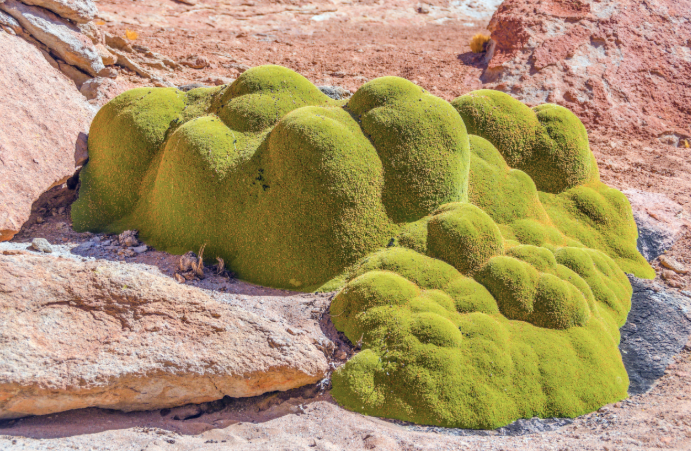Geographically, Patagonia is an incredibly diverse region. From mountains to glaciers, oceans to forests, Patagonia plays host to a vast variety of ecosystems. However, you may be surprised to learn that Patagonia is also home to a desert. Although deserts aren’t generally thought of as cold, a desert doesn’t necessarily have to be hot – just dry. The Patagonian Desert, or Magellanic Steppe, is a cold, winter desert where it rarely rains and the average temperature is just 3°C. Once covered by dense forest, the Magellanic Steppe is now a desolate landscape. However, despite the sparsity of the vegetation, the desert has some truly fascinating plant life. Below, discover some of the most beautiful Patagonian desert plants.
1. Mate negre (Junellia tridens)
Mate negre is a dense, coarse bush with yellow flowers and small succulent leaves. The plant thrives in the cold, dry climate of the Patagonian Desert as the unusual foliage holds moisture near to its branches. However, the strong winds mean that the plant rarely grows over two feet tall.
2. Cushion plant (Azorella trifurcata)

Cushion plants are actually fairly common in a number of different environments. However, nestled in the rocky landscape of the Magellanic Steppe, the cushion plant takes on the character of a plant from another planet. Compact, low-lying and dense, cushion plants have specially adapted tap roots that can cope well in nutrient-poor soil.
3. Pallo amarillo (Berberis montana)
Pallo amarillo is a rugged bush that can grow at amazingly high altitude, thriving at between 3,000 and 9,000 feet above sea level. This hardy plant is one of the most common Patagonian desert plants, providing a burst of color with its golden yellow flowers. In autumn, these flowers mature into edible purple berries.
4. Peppertree (Schinus latifolius)

The peppertree is an evergreen plant that is mostly found in the coastal and lowland areas of the Patagonian Desert. Identifiable by its crop of small, reddish-purple berries, the plant also has a distinctive dark brown, gnarled trunk. Locals sell the berries as ‘pink peppercorns’ although the plant has no relationship with common pepper. The berries also have several applications in traditional medicine as an antidepressant, diuretic and antiseptic. However, if not prepared properly, the berries can be poisonous.
5. Hierba negra (Mulinum spinosum)
Hierba negra, or ‘black grass’, is a small shrub that is endemic to the Magellanic Steppe. The plant grows up to 40 inches in a rounded formation, with grey-green foliage that features intriguing yellow veins. In early summer, the plant bursts into a riot of color, sprouting bright red and acid green flowers.
More fascinating Patagonian desert plants to discover
There are many places in Patagonia that feel like the surface of another planet, but the Magellanic Steppe is perhaps one of the most ethereal. This is just a small selection of some of the amazing flora present in Patagonia, with many more species to discover. Full of unique, endemic plants and animals, Patagonia a must for any nature lover. So what are you waiting for? Start planning your adventure today.
No comments yet
There are no comments on this post yet.






Leave a comment